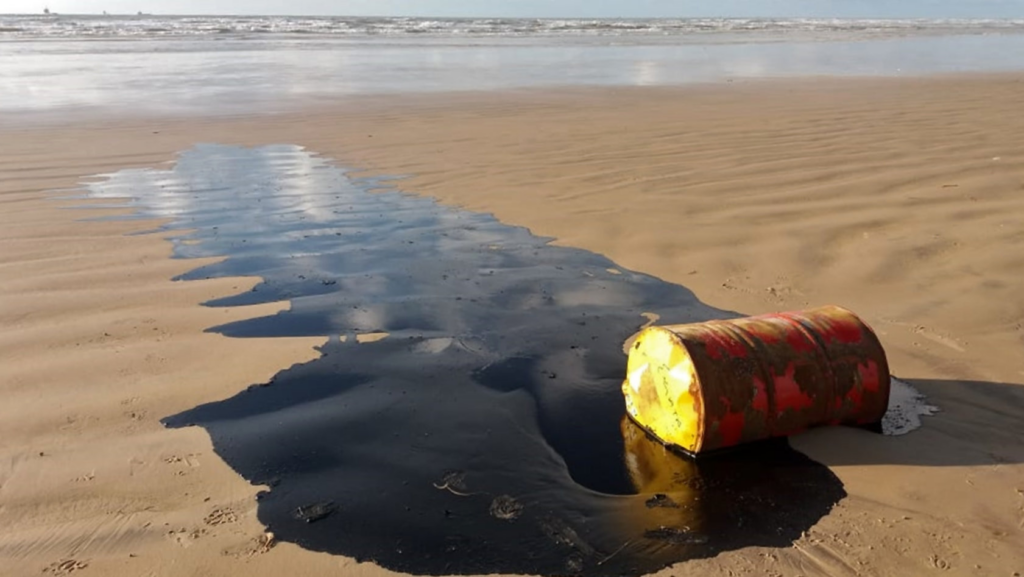How We Clean Up Oil Spills—and Why It Matters
By Finlay Gilkinson – 12/04/2025
When oil spills into oceans, rivers, or lakes, the consequences ripple far beyond the slick surface. These disasters not only pose a threat to marine ecosystems and coastal economies but also compromise water supplies with dangerous hydrocarbon contamination. Cleaning up oil spills is a complex, urgent task—one that blends technology, environmental science, and sometimes brute-force labour to minimize long-term damage.

Methods of Oil Spill Clean-up
1. Containment and Skimming
Booms—floating barriers—are deployed quickly to contain the spread of oil on water. Once confined, skimmers are used to scoop up or vacuum the oil from the surface. This method is most effective in calm waters and when the oil is still fresh.
2. Chemical Dispersants
Dispersants are sprayed over the spill to break oil into smaller droplets, enhancing natural biodegradation. However, these chemicals can pose their own toxicological risks and are controversial for their potential to compound environmental harm.
3. Bioremediation
This approach involves stimulating or introducing microorganisms that naturally digest hydrocarbons. Fertilizers may be added to encourage microbial growth, accelerating the breakdown of oil into less harmful substances.
4. In-Situ Burning
In some cases, oil is ignited on the surface to remove it rapidly. This method is only applicable under specific conditions and produces toxic smoke, raising concerns about air quality.
5. Manual and Mechanical Recovery
In coastal or rocky areas, clean-up teams may use shovels, absorbent pads, and heavy machinery to remove oil-soaked material. Though labour-intensive, it’s often the only option in sensitive or hard-to-reach regions
The Toxic Legacy: Hydrocarbon Contamination
Crude oil and refined petroleum products contain a wide range of hydrocarbons, including toxic compounds like benzene, toluene, ethylbenzene, and xylene (BTEX). When oil infiltrates water supplies, these hydrocarbons can have profound and lasting health effects.
Human Health Risks
Hydrocarbon-contaminated water is linked to cancers, neurological disorders, liver and kidney damage, and developmental problems in children. Even trace levels of BTEX compounds can render water unsafe for consumption, requiring costly filtration and remediation.
Ecological Consequences
Aquatic life is highly sensitive to hydrocarbon pollution. Oil can suffocate fish, poison plankton, and destroy spawning grounds. Long-term contamination disrupts food chains and reduces biodiversity, leading to ecosystem collapse in extreme cases.
Why Clean-up Matters
Beyond the immediate visual and economic toll of an oil spill lies a deeper, more insidious danger—persistent contamination of vital water resources. Cleaning up oil isn’t just about saving birds and beaches. It’s about safeguarding public health, preserving marine biodiversity, and maintaining the integrity of our freshwater reserves.
In a world increasingly reliant on fossil fuels yet urgently transitioning to greener alternatives, oil spill clean-up remains both a technological challenge and a moral imperative. Whether through innovation or policy, the demand for safer, faster, and more effective clean-up solutions will only grow.
Understanding the full picture of oil spills—including the devastating effects of hydrocarbon contamination—reminds us of the fragile balance we strike when harvesting energy from the Earth. Our response, both proactive and reactive, defines not only our environmental priorities but also the legacy we leave behind.
Ready to find the perfect job?
Our team of experts work with an extensive network of employers. Submit your CV to ensure you’re a part of our network of talented candidates and we’ll make you aware of opportunities before they are even posted.
